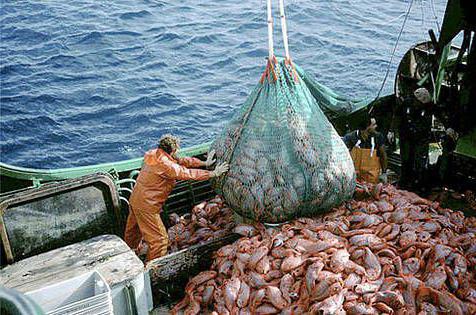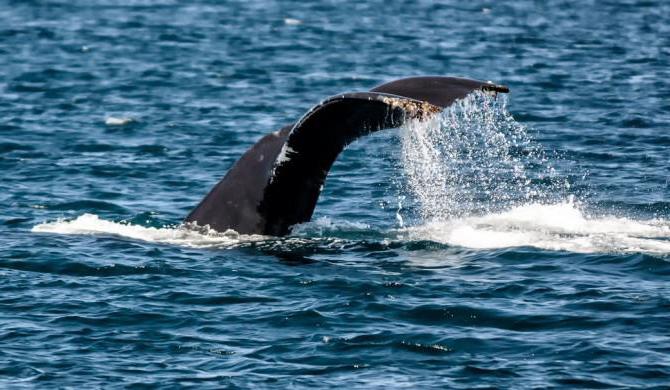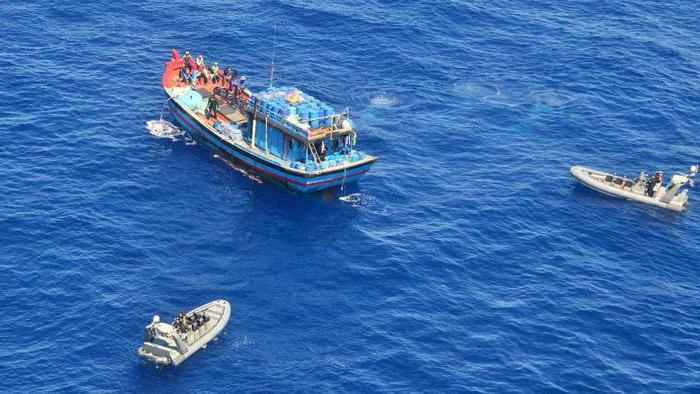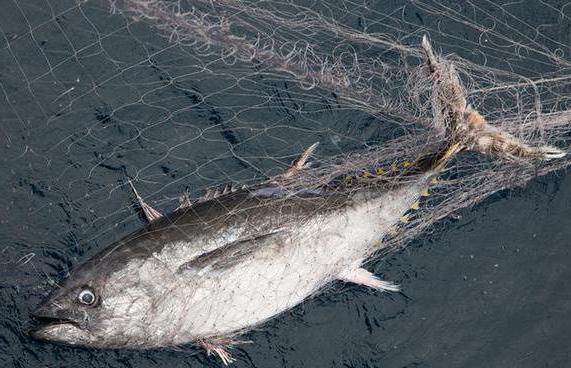The Criminal Code provides for penalties for a variety of crimes. All of them are divided into categories and grouped into respective chapters. Ch. 26 contains provisions providing for sanctions for environmental crimes. One of them is the 256th article, which establishes punishment for illegal extraction (catch) of aquatic biological resources. Consider its features. 
General composition
Illegal catch / catch is punished if:
- Caused major damage.
- Self-propelled floating means, chemical / explosives, electric current or other prohibited methods / tools for the mass extermination of biological resources living in water were used.
- On spawning sites / migration routes to these places.
- In specially protected areas, on the territory of an environmental disaster or emergency.
Qualifying Attributes
In the 2nd part of the norm, punishment for illegal mining is fixed fur seals, beavers and other mammals in the restricted area or in the open sea.
Part 3 provides for a particularly qualifying composition. The signs of an act are:
- Use of official status.
- Commitment by an organized group or persons by prior conspiracy.
- Causing particularly serious damage.

Sentences under Art. 256 of the Criminal Code
One of the following penalties may be imposed for an assault provided for in paragraphs 1, 2:
- Cash collection in the amount of 300-500 t. or making up the perpetrator’s income for 2-3 g.
- Imprisonment / correctional labor for up to 24 months.
Part 3 of the sanction provides for the following:
- Fine 500 thousand p. - 1 million p. or in the amount of perpetrators' income for 3-5 liters.
- 2-5 liter imprisonment with the prohibition to fill positions / conduct activities of certain types for up to three years or without him.
Art. 256 of the Criminal Code with comments
The criminal object is public relations related to the rational use, reproduction, protection of biological resources. They are regulated by various regulatory documents, including, in particular, Federal Law No. 166, the Law "On Environmental Protection", "On the Animal World", etc. 
Moreover, as indicated by the Plenum of the Armed Forces in the Decree No. 26 of 2010, the conservation of resources and fisheries is regulated not only by federal, but also regional legislation. In addition, when assessing the unlawfulness of actions, it is necessary to take into account the provisions of international agreements to which the Russian Federation is a party.
Subject of assault
They are biological resources that live in water. These include:
- The fish.
- Mammals (seals, seals, beavers, walruses, dolphins, whales, seals, etc.) and other aquatic animals.
- Commercial plants not extracted from their natural environment by human labor. These include, for example, seaweed, used for the production of fertilizers, the manufacture of cosmetics, medicines, and food.

Water animals do not include waterfowl and fur animals (muskrat, otter, river beaver, nutria, etc.). Their illegal prey is regarded as illegal hunting and does not fall under Art. 256 of the Criminal Code, and under article 258.
Objective aspect
It is constituted by illegal extraction or catch of biological resources from water, i.e., their illegal removal from the natural habitat, if at least one of the signs given in Part 1 takes place Art. 256 of the Criminal Code. Their content in the norm is not disclosed, since it is blanket (reference).To determine the signs of composition, one should turn to sectoral legal acts.
Illegal extraction / catch involves the seizure of resources in violation of environmental standards, for example, without proper permission, in violation of the rules established by this permit, at prohibited times and so on. 
Damage assessment
To determine the large size in the 1st part Art. 256 CC must be considered:
- The volume of extracted, destroyed, damaged resources.
- Cost at special rates.
- The prevalence of animals (rare, endangered species, etc.).
- Ecological value.
- Significance for the respective habitat.
Such harm is characteristic, for example, in prey associated with the destruction of spawning sites, the death of fry in large numbers, the destruction / capture of animals / plants included in the Red Book.
The cost of resources that have been targeted Art. 256 CC, calculated at special rates regardless of weight or age. The current rates are approved by government decree No. 515 of 1994.
Controversial issues
In Decree No. 625 of 2008, the Government clarifies what damage should be considered large. Within the meaning of clause 1 of this document, such damage is calculated in tons or in units of heads and amounts to the difference between the volume extracted and the production quota given in the permit granted to the legal entity or the entrepreneur. 
As you can see, the Decree establishes the procedure for assessing major damage only for persons engaged in industrial or other type of fishing, not considered to be sports or amateur.
Many lawyers propose to fix legislatively specific limits of major harm in terms of value. Its necessity is caused by the absence of clear criteria for its determination and the procedure for periodically reviewing tariffs to calculate compensation for damage.
Nuances
Illegal capture / fishing of aquatic animals, fish, and commercial plants that caused major harm are acts with material composition. Crimes are recognized completed only when real damage occurs.
In assessing acts, a link should be established between the consequences and unlawful actions. In this case, natural factors that can affect the occurrence of damage should be taken into account.
Aggravating circumstances
The acts referred to in paragraph b of the first part Art. 256 CCare considered especially dangerous.
The disposition indicates self-propelled floating vehicles. These include boats, yachts, motor boats. Moreover, the liability under Art. 256 of the Criminal Code occurs if the indicated watercraft were used exclusively for fishing / prey, and not for transportation of prey, transportation of poachers to the fishing site, etc.
The methods of mass extermination include the rut of fish, the obstruction of channels, the use of nets by amateur fishers. 
Spawning places
They are determined by regulatory acts, including the Fisheries Rules in force within the basin administrations of the respective regions. Moreover, all these sites are located within the territorial sea of the Russian Federation.
Fishing / harvesting of biological resources on the high seas is regulated by the provisions of international agreements. For illegal fishing in the exclusive economic zones of the Russian Federation, punishment is provided for under Article 253 of the Code.
Qualification Features
The design of the acts established in paragraphs "b" - "g" of the first part of article 256 is formal. They are deemed completed at the time of the start of fishing / prey. It will not matter if the fish was caught, other animals / plants were extracted or not.
In this regard, some experts consider the use of the word “catch” inaccurate. This term characterizes the end, the result of production, but not the process itself.
Subjective aspect
Responsible individuals from 16 years of age may be held liable.
The subjective aspect is characterized by direct intent.The person is aware of the danger of illegal fishing / prey, anticipates the consequences, including the likelihood of damage, but wishes to perform these actions.
The motive of the crime, as well as its goals, does not affect the assessment of wrongfulness.